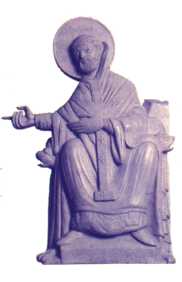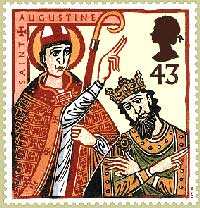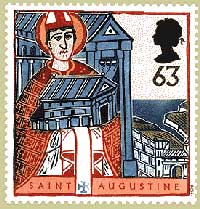Readings:
-
Tobit 13:1, 10-11
Psalm 66:1-8
2 Corinthians 5:17-21
Luke 5:1-11
Preface of Apostles and Ordinations
[Common of a Missionary] [Common of a Pastor]
[Common of a Monastic or Professed Religious]
[For the Ministry II]
[For the Mission of the Church]
O Lord our God, who by thy Son Jesus Christ didst call thy servant Augustine to preach the Gospel to the English people: We pray that all whom thou dost call and send may do thy will, bide thy time, and see thy glory; through the same Jesus Christ our Lord, who liveth and reigneth with thee and the Holy Ghost, one God, for ever and ever. Amen.
PRAYER (contemporary language)
O Lord our God, who by your Son Jesus Christ called your servant Augustine to preach the Gospel to the English people: We pray that all whom you call and send may do your will, bide your time, and see your glory; through the same Jesus Christ our Lord, who lives and reigns with you and the Holy Spirit, one God, for ever and ever. Amen.
Lessons revised in Lesser Feasts & Fasts 2024.
Return to Lectionary Home Page
Webmaster: Charles Wohlers
Last updated: 29 March 2025
AUGUSTINE OF CANTERBURY
BISHOP AND MISSIONARY (26 MAY 605)
 The
Christian Church was established in the British Isles well before 300. Some
scholars believe that it was introduced by missionaries from the Eastern
or Greek-speaking half of the Mediterranean world. Celtic Christianity had
its own distinctive culture, and Greek scholarship flourished in Ireland
for several centuries after it had died elsewhere in Western Europe.
The
Christian Church was established in the British Isles well before 300. Some
scholars believe that it was introduced by missionaries from the Eastern
or Greek-speaking half of the Mediterranean world. Celtic Christianity had
its own distinctive culture, and Greek scholarship flourished in Ireland
for several centuries after it had died elsewhere in Western Europe.
However, in the fifth century Britain was invaded by non-Christian Germanic tribes: the Angles, Saxons, and Jutes. They conquered the native Celtic Christians (despite resistance by, among others, a leader whose story has come down to us, doubtless with some exaggeration, as that of King Arthur), or drove them north and west into Cornwall, Wales, Scotland, and Ireland. From these regions Celtic Christian missionaries returned to England to preach the Gospel to the heathen invaders. Meanwhile, the Bishop of Rome, Gregory the Great, decided to send missionaries from Rome, a group of monks led by their prior, Augustine (not to be confused with the more famous Augustine of Hippo).
 |
| British stamps commemorating St. Augustine: Above, Augustine baptizing Ethelbert. Below, Augutine and his cathedral |
 |
In 603, he held a conference with the leaders of the already existing Christian congregations in Britain, but failed to reach an accomodation with them, largely due to his own tactlessness, and his insistence (contrary, it may be noted, to Gregory's explicit advice) on imposing Roman customs on a church long accustomed to its own traditions of worship. It is said that the English bishops, before going to meet Augustine, consulted a hermit with a reputation for wisdom and holiness, asking him, "Shall we accept this man as our leader, or not?" The hermit replied, "If, at your meeting, he rises to greet you, then accept him, but if he remains seated, then he is arrogant and unfit to lead, and you ought to reject him." Augustine, alas, remained seated. It took another sixty years before the breach was healed.
by James Kiefer